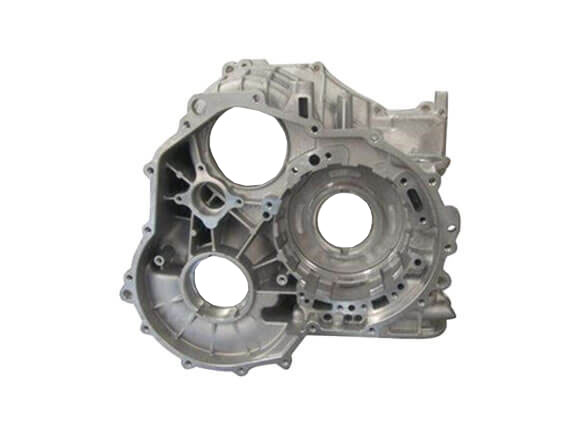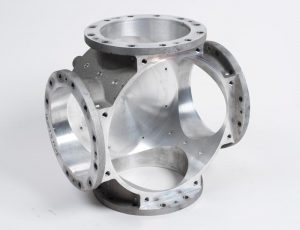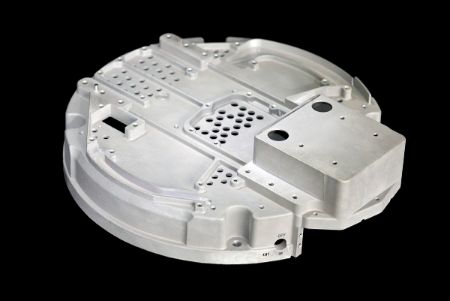What Makes Aluminum Foundry Indispensable in the Industrial Industry
Wiki Article
Aluminum Casting Explained: Key Truths and Insights for Sector Professionals
Aluminum casting functions as an essential procedure in contemporary production, shaping elements throughout various markets. Its varied methods, such as sand and die casting, accommodate various manufacturing requirements. The special homes of aluminum alloys enhance their applicability, yet tests stay in keeping high quality and efficiency. Recognizing these facets is necessary for sector experts. What are the current innovations and best techniques that can additionally optimize this process?Summary of Aluminum Casting Processes

Key elements of aluminum casting procedures consist of the prep work of mold and mildews, which might be made from sand, steel, or ceramic materials, relying on the meant use. Additionally, temperature control is crucial to guarantee proper melting and solidification of aluminum.
The casting process allows for detailed styles and can accomplish high levels of dimensional precision. Once cooled down, the castings may undergo ending up operations such as machining or surface treatment to satisfy particular efficiency standards. Overall, aluminum casting offers as a flexible manufacturing strategy, properly satisfying the diverse demands of different industries.
Sorts Of Aluminum Casting Techniques
In the domain name of aluminum casting, different methods are employed to accomplish various results. Sand casting strategies offer adaptability and cost-effectiveness for complicated shapes, while die casting procedures offer high accuracy and performance for automation. Understanding these techniques is crucial for picking the ideal approach based on task needs.Sand Casting Methods
Sand casting methods represent a basic approach in aluminum casting, where sand is used as a mold product to form molten steel. This procedure involves developing a pattern from the preferred part, which is after that put in a sand mix to develop a mold and mildew. The sand is compacted around the pattern, and after removal, it develops a tooth cavity in the form of the component. Molten aluminum is poured right into this cavity, permitting it to solidify and cool down. One significant advantage of sand casting is its convenience; it can fit large components and complex shapes. Furthermore, the products utilized are fairly economical, making it an accessible choice for various production applications in the aluminum sector.Die Casting Processes
Die casting procedures are a noticeable method for forming aluminum parts, using high-pressure techniques to require liquified steel right into specifically crafted molds. This process is especially preferred for its capacity to generate intricate forms with limited resistances and a smooth coating. There are two main kinds of die casting: warm chamber and cool chamber. Warm chamber die casting is ideal for steels with reduced melting factors, permitting faster production prices. Conversely, cool chamber die casting is optimal for higher melting point steels, needing a separate melting furnace. Both approaches boost effectiveness and decrease material waste, making them essential in vehicle, aerospace, and consumer items markets. Understanding these procedures assists professionals pick one of the most ideal technique for their certain applications.Product Quality of Aluminum Alloys

Toughness and Resilience
Stamina and longevity are crucial attributes of aluminum alloys that make them appropriate for numerous casting applications. These materials exhibit a positive strength-to-weight proportion, enabling the development of light-weight yet robust parts. With respect to tensile toughness, certain aluminum alloys can be crafted to withstand significant tons without warping. This building is particularly crucial in markets such as aerospace and auto, where efficiency and safety and security are paramount. Furthermore, aluminum alloys usually retain their mechanical properties under diverse temperature level conditions, guaranteeing regular efficiency. The intrinsic ductility of these alloys also permits reliable shaping throughout the casting procedure, making it much easier to create complicated geometries. In general, the stamina and toughness of aluminum alloys add considerably to their extensive use in advanced applications.Deterioration Resistance Characteristics
While aluminum alloys are treasured for their stamina and light-weight homes, their rust resistance is another essential feature that enhances their viability for different applications. Aluminum naturally forms a safety oxide layer when subjected to moisture, which helps to avoid more oxidation. This integral residential or commercial property makes aluminum alloys specifically important in atmospheres susceptible to corrosion, such as aquatic and industrial setups. In addition, various alloy make-ups can affect resistance levels, with particular alloys specifically crafted to enhance this particular. Treatments like anodizing can even more improve deterioration resistance by thickening the oxide layer. Understanding the corrosion resistance of aluminum alloys is crucial for market experts when selecting materials for projects requiring toughness and longevity in difficult atmospheres.Benefits of Aluminum Casting in Production
Aluminum casting deals numerous advantages in production, making it a preferred choice for various sectors. One considerable benefit is its lightweight nature, which adds to minimized transport costs and enhanced power performance in end products. Aluminum's outstanding thermal and electrical conductivity improves capability in applications calling for warmth dissipation or electrical conduction.The product's capacity to be cast right into complex forms permits for layout adaptability, reducing the need for additional machining processes. Furthermore, aluminum casting exhibits superior deterioration resistance, causing longer product life-spans and lower upkeep costs.

Typical Applications of Aluminum Castings
The convenience of aluminum casting enables its extensive usage across different markets. Usual applications include vehicle components, where lightweight and corrosion-resistant parts, such as engine blocks and transmission real estates, enhance lorry performance. In the aerospace field, aluminum castings are used for architectural parts, offering strength without adding considerable weight.
In addition, the electrical industry gain from aluminum spreadings in manufacturing enclosures and warm sinks, where thermal conductivity is essential. The customer products sector likewise incorporates aluminum spreadings in items like kitchenware, furniture, and decorative products, combining looks with functionality.
Furthermore, the construction sector employs aluminum spreadings for architectural components, window frameworks, and fixtures, which give durability and layout versatility. Generally, the diverse applications of aluminum castings emphasize their relevance in modern-day production, adding to improvements in efficiency and product layout throughout several fields.
Innovations and Technical Improvements
As markets continue to evolve, technologies in aluminum casting technology are changing manufacturing procedures and product capacities. Improvements in 3D printing and additive production have enabled the creation of intricate geometries that were formerly impossible to attain with conventional methods. These technologies permit for rapid prototyping, lowering lead times and prices.In addition, improvements in mold and mildew layout and materials have actually improved the casting process by boosting efficiency and lowering waste. The combination of smart manufacturing techniques, such pop over here as IoT tools and real-time data analytics, permits for better tracking and optimization of manufacturing specifications, causing higher high quality results.
Additionally, developments in aluminum alloys supply improved toughness, deterioration resistance, and lightweight homes, dealing with the growing demands in aerospace and automotive industries. Collectively, these technologies are not only boosting productivity however additionally fulfilling the rigorous standards of contemporary design applications.
Ideal Practices for Quality Assurance in Aluminum Casting
Making sure top quality outcomes in aluminum casting calls for adherence to finest methods that incorporate numerous stages of the production process. Initially, detailed material examination is important to verify the quality of aluminum alloys made use of, as pollutants can substantially influence the end product. Implementing specific melting and pouring methods reduces defects; keeping optimal temperature levels prevents oxidation and advertises uniformity.Mold layout plays an essential duty; utilizing computer-aided design (CAD) can enhance precision and minimize human error. Normal tracking of the cooling procedure is vital to avoid bending and shrinking. In addition, using non-destructive testing techniques, such as ultrasonic or X-ray evaluations, aids identify inner problems without harming the elements.
Establishing a responses loop with designers and drivers fosters constant improvement, making sure that quality control procedures evolve together with technological advancements. By complying with these ideal practices, makers can improve the dependability and efficiency of aluminum spreadings.
Often Asked Questions
What Are the Environmental Influences of Aluminum Casting?
The ecological influences of aluminum casting include significant energy usage, greenhouse gas exhausts, and possible water air pollution from foundry operations. Additionally, bauxite check my site mining for aluminum ore can result in habitat damage and soil deterioration.Exactly How Does Aluminum Casting Compare to Other Metal Casting Procedures?
Aluminum casting typically supplies benefits in light-weight components and corrosion resistance compared to other processes, such as iron or steel casting, which may supply higher toughness but lead to much heavier and much less corrosion-resistant items. - Aluminum Casting CompanyWhat Are Usual Issues in Aluminum Castings and Their Reasons?
Usual issues in aluminum spreadings consist of porosity, shrinking, and incorporations. Reasons commonly originate from inappropriate putting strategies, poor mold and mildew style, or contamination of the molten metal, influencing the last item's honesty and performance.What Security Precautions Should Be Taken During Aluminum Casting?
Throughout aluminum casting, necessary security preventative measures consist of wearing safety gear, guaranteeing proper air flow, maintaining a clean work space, handling molten metal with care, and following well established procedures to decrease risks of burns, inhalation risks, and accidents.Just How Can I Enhance the Efficiency of My Aluminum Casting Workflow?
To improve performance in aluminum casting operations, one need to enhance mold and mildew style, simplify material handling, use automated procedures, conduct regular upkeep on equipment, and buy employee training to boost skills and efficiency.Various techniques exist, aluminum casting encompasses numerous primary procedures that cater to various applications and needs. Key aspects of aluminum casting procedures include the prep work of mold and mildews, which may be made from sand, steel, or ceramic materials, depending on the intended use. Sand casting strategies represent an essential approach in aluminum casting, where sand is made use of as a mold and mildew material to shape liquified steel. As industries proceed to develop, advancements in aluminum casting modern technology are changing manufacturing procedures and product capabilities. Making sure premium results in aluminum casting needs adherence see this website to ideal practices that include numerous phases of the production procedure.
Report this wiki page